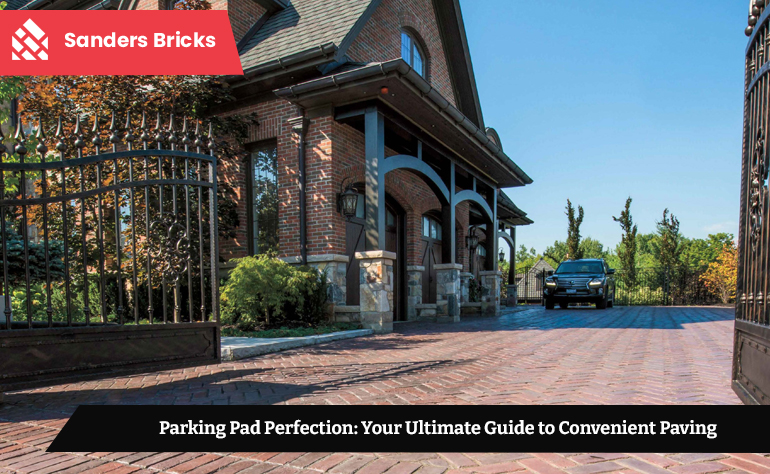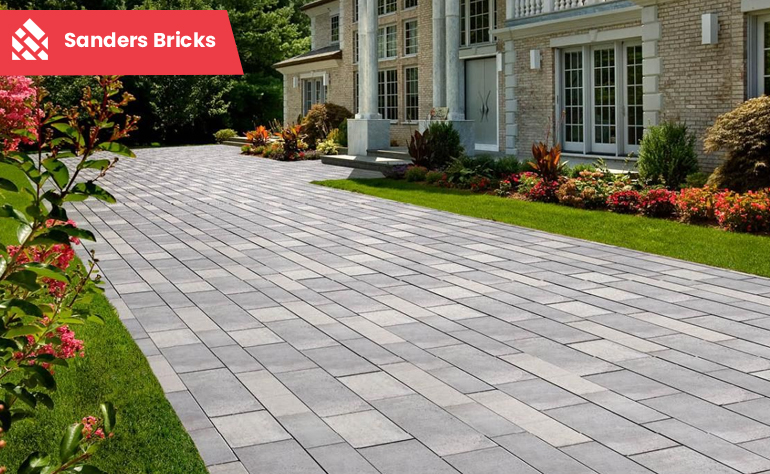Parking Pad Perfection: Your Ultimate Guide to Convenient Paving
Having the right space for convenient parking is a must, whether you’re building a small driveway or creating a paved area for your vehicle. With the hustle and bustle of everyday life, having a place to park easily can make your life easier. “Parking Pad Perfection” aims to walk you through the process of creating the perfect parking pad so that your home and outdoor area stay organized. With the right material and design, a parking pad can not only provide a place to park but can also enhance the beauty of your home’s exterior.Getting a parking pad right means creating a surface that is durable, looks neat, and meets your needs. There are a few important things to consider, such as material selection, proper space utilization, and pad maintenance. With the right planning, you can make the most of your space and make your parking area perfect. Parking pads can be important not just for your vehicle, but also for the overall aesthetics and functionality of your home. In this guide, we’ll show you how you can make your parking pad comfortable and durable, and keep it in great condition for a long time.
1. Choose the right material
One of the most important decisions for building a parking pad is choosing the right material. Depending on your needs and environmental conditions, different materials have advantages and disadvantages.
Concrete
Concrete is the most commonly used material because it is durable and easy to maintain. Once it is cemented, it can last for many years and has a clean and plain surface. The advantage of concrete is that it is stable in all weather conditions and does not crack easily.
- Advantages: Concrete is durable and also repels water and dust. It is also easy to maintain, and it helps prevent rainwater from flowing. It lasts a long time and has a strong surface.
- Disadvantages: One of the main disadvantages of concrete is that it can crack if not installed properly. It can also be a little more expensive than other materials, and installation can be difficult.
Brick and stone
Brick and stone are used to give parking pads a different and beautiful look. It can be a more stylish option than concrete. It can be installed in different designs and patterns, making your parking pad enhance the beauty of the home’s exterior.
- Advantages: Brick and stone can be easily replaced if any part gets damaged. It is suitable for both traditional and modern designs and can be used creatively in its installation.
- Disadvantages: Algae or dust can accumulate on its surface over time, which can be a little difficult to keep clean. Also, it can be a little more expensive, and it can take a while to install it correctly.
Gravel
Gravel is another good option for parking pads, especially in areas where budget and urgency are important. It is inexpensive and easy to install, and can be easily maintained.
- Advantages: Gravel can be installed quickly and it allows water to drain easily. It is available in different sizes and colors, allowing you to choose it as per your design.
- Disadvantages: Gravel may spread over time and needs to be corrected from time to time to keep it in the right position. It may feel a little unstable when parking on the pad.
2. Proper Design and Planning
The design of a parking pad is very important. It not only enhances the beauty of your home’s exterior, but it also helps keep your vehicle safe and organized.
Size and Location
The size of your parking pad should be according to the size of your vehicle and your needs. If you have more than one vehicle, you need to plan for enough space so that the vehicles can be parked comfortably.
- Advantage: If you choose the right size, it can make the most of the space. It helps in keeping the vehicles parked in an organized manner and also leaves open space around the vehicles.
Slope and Drainage
Proper slope and drainage planning is also very important in a parking pad. If water collects on the pad, it can damage the surface, and can also cause cracks over time. For proper drainage, the pad should be built on a slight slope so that water can flow easily.
- Advantage: This not only keeps the surface safe, but also allows water to flow properly. This helps your pad last longer.
Adjusting Patterns and Designs
Instead of making a parking pad just a plain surface, it can also be made in different designs and patterns. You can create different designs using bricks or stones, which will make your parking area look even more attractive.
- Advantage: The use of designs and patterns gives a different and unique look to the parking pad. It further enhances the beauty of the outside of your house.
3. Maintenance and Cleaning Tips
Regular maintenance and cleaning of the parking pad is necessary to keep it in perfect condition. If proper care is taken, your pad can remain safe and beautiful for many years.
Regular Cleaning
Dust, leaves, and other debris can accumulate on the parking pad from time to time. Use a broom or water to clean them regularly. This not only keeps the pad clean, but it also prevents cracks or damage to the surface.
- Advantage: Regular cleaning keeps your pad looking new for a long time. Also, it prevents any kind of dirt from accumulating on the surface, which can cause damage over time.
Periodic Inspection
Check the parking pad from time to time. If cracks or wear appear on the surface, repair it immediately. This can prevent damage to the pad and maintain its longevity.
- Advantage: Regular inspection can solve minor problems in time. This helps you avoid major repairs.
Winter Care
Snow and cold can damage the parking pad during the winter season. Use proper equipment to remove snow and use salt or chemicals as little as possible, as it can damage the pad surface.
- Advantage: Proper care keeps your parking pad safe even in winter. It protects the pad from possible damage caused by cold.
4. Maintaining the Pad Properly
Some easy methods can be adopted to maintain the parking pad in good condition for a long time. These methods not only protect your pad, but also maintain its look.
Crack repair
If cracks develop on a concrete or brick pad, they should be filled immediately. This will prevent the cracks from getting bigger and the pad surface will be protected. Cracks can grow quickly, so timely repairs are important.
- Advantage: Minor repairs help you avoid big expenses. It is a simple and effective way to protect your surface.
Drainage check
There should be proper water flow around the parking pad. If water accumulates, it can damage the surface. Make sure the slope of the pad is correct and water is draining easily.
- Advantage: Proper water drainage prevents water from accumulating on the surface, which increases the life of the pad and reduces the chances of cracks.
Periodic restoration
Over time, the surface of the parking pad can become worn out. In such a case, opt for restoration. This process gives the pad a new look and maintains its protection.
- Advantage: Restoration increases the longevity of the pad and makes it look like new. It is an easy way to get the pad back in good condition.
Conclusion
In this guide, we have discussed how a properly constructed parking pads not only provide space for your vehicle, but also enhance the beauty of your home. The right material, design, and maintenance are extremely important. If you take care of these things, your parking pad can remain safe and beautiful for a long time.

